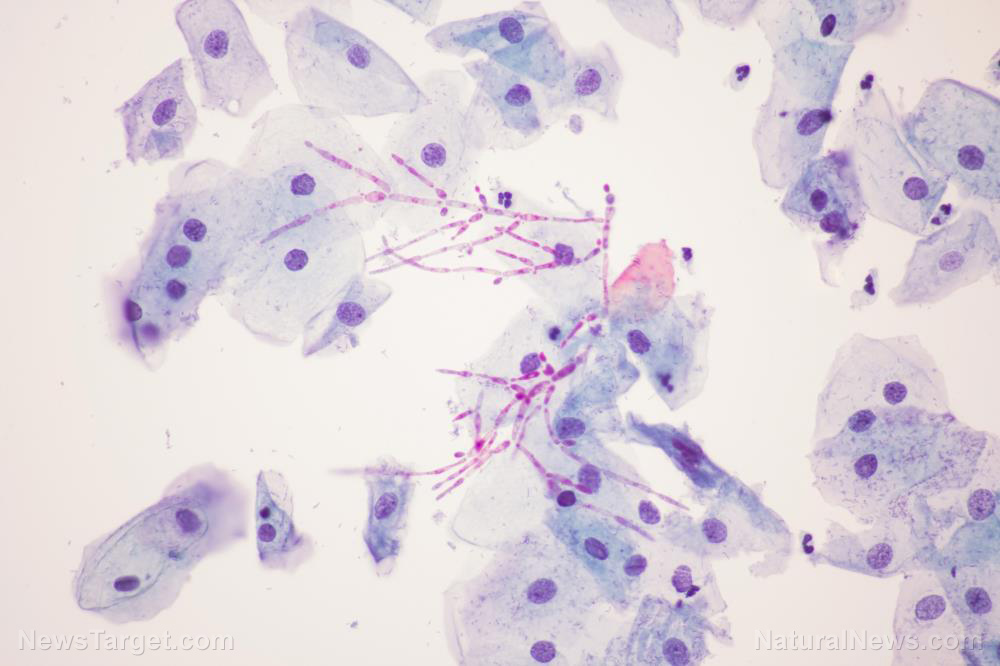

5 Fungal infection, particularly candidiasis, is well known to cause GI symptoms in patients with underlying diseases such as cancer. Incidence of invasive fungal infections increases in time with the rise in at-risk populations (in particular, patients with acquired immunodeficiencies due to immunosuppressive therapies). Our patient did not have gross or histological evidence of a fungal infection however, the small bowel aspirate demonstrated hyphae and cultures confirmed the diagnosis of SIFO, which was appropriately treated with antifungal medication. The therapeutic approach to SIBO is oriented toward resolving predisposing conditions and is supported by antibiotic treatment to restore the normal small intestinal microflora and by modifications of dietary habits for symptomatic relief. The patient was without an intact ileocecal valve, which may explain the colonization of the small bowel with a colonic commensal fungus. There are multiple theories but none has substantial evidence to validate itself. 2 The mechanism by which Candida overgrowth causes diarrhea is unknown. Gastric acid secretion and intestinal clearance provide the qualitative and quantitative partitioning of intestinal bacteria small intestinal bacteria overgrowth (SIBO) occurs when these barrier mechanisms fail. The amount of microorganisms increases as we proceed toward the colon with highest number in colon. 1 The overgrowth of these microbes occur under various circumstances and cause GI symptoms. More than 99% of this microbiota consists of bacterial and Candida yeasts are detectable in 96% of neonates by the end of the first month of life. It comprises of various types of microorganism.
#OVERGROWTH OF CANDIDA SERIES#
Microbiota is established in the course of time in series of stages. Microbial colonization starts in the GI tract, since birth. She has regular follow ups and her weight increased up to 11 pounds (4.99 kg) with improvement of her diarrhea and malnutrition. She was gradually weaned off total parenteral nutrition during the next 3 months, with slow reintroduction of healthy whole foods and returned to work by the fourth month postdischarge. She completed a 3-week course of fluconazole and her symptoms slowly improved and she started gaining weight. The patient was begun on central parenteral nutrition (CPN) and closely monitored for refeeding syndrome and antifungals. A small bowel fluid aspirate was negative for bacterial overgrowth but positive for overgrowth of Candida tropicalis and also was found to have anti- Candida immunoglobulin A 2.7 times the upper limit of normal. Nontender, nondistended abdomen with colostomy bag was present without surrounding erythema, or discharge.Īn upper endoscopy showed duodenal scalloping however, biopsies were unremarkable for any pathological entity. On physical examination, she appeared to be a thin, fragile female with wasting in the subscapular and sternocleidomastoid area. Adding proper nutrients and slowly eradicating the dysbiotic fungi in the small intestine can help in resolution of GI symptoms and return to functional status. This case shows how important dietary interventions can be in managing malnutrition. She was gradually weaned off total parenteral nutrition during the next 3 mo, with slow reintroduction of healthy whole foods and had appropriate weight gain and resolution of her GI symptoms. The patient was begun on central parenteral nutrition and she completed a 3-wk course of fluconazole. A small bowel fluid aspirate was positive for overgrowth of Candida tropicalis and also was found to have anti- Candida immunoglobulin A. An upper endoscopy was unremarkable for any significant pathological entity. On physical exam, she appeared to be a thin, fragile female with wasting in the subscapular and sternocleidomastoid area with benign GI exam. In this article, the authors describe an interesting case report of a 48-y-old female with Sjogren’s syndrome and stage II cervical cancer complicated by a rectovaginal fistulae postradiation therapy requiring a colectomy and ileostomy, who presented with a wasting syndrome consisting of unresolving watery diarrhea and a 40-pound (18.14 kg) weight loss in the course of 5 mo. Only a handful of case reports in the literature describe presence of Candida albicans in the gut of otherwise healthy subjects who were older adults and presented with gastrointestinal (GI) symptoms.


 0 kommentar(er)
0 kommentar(er)
